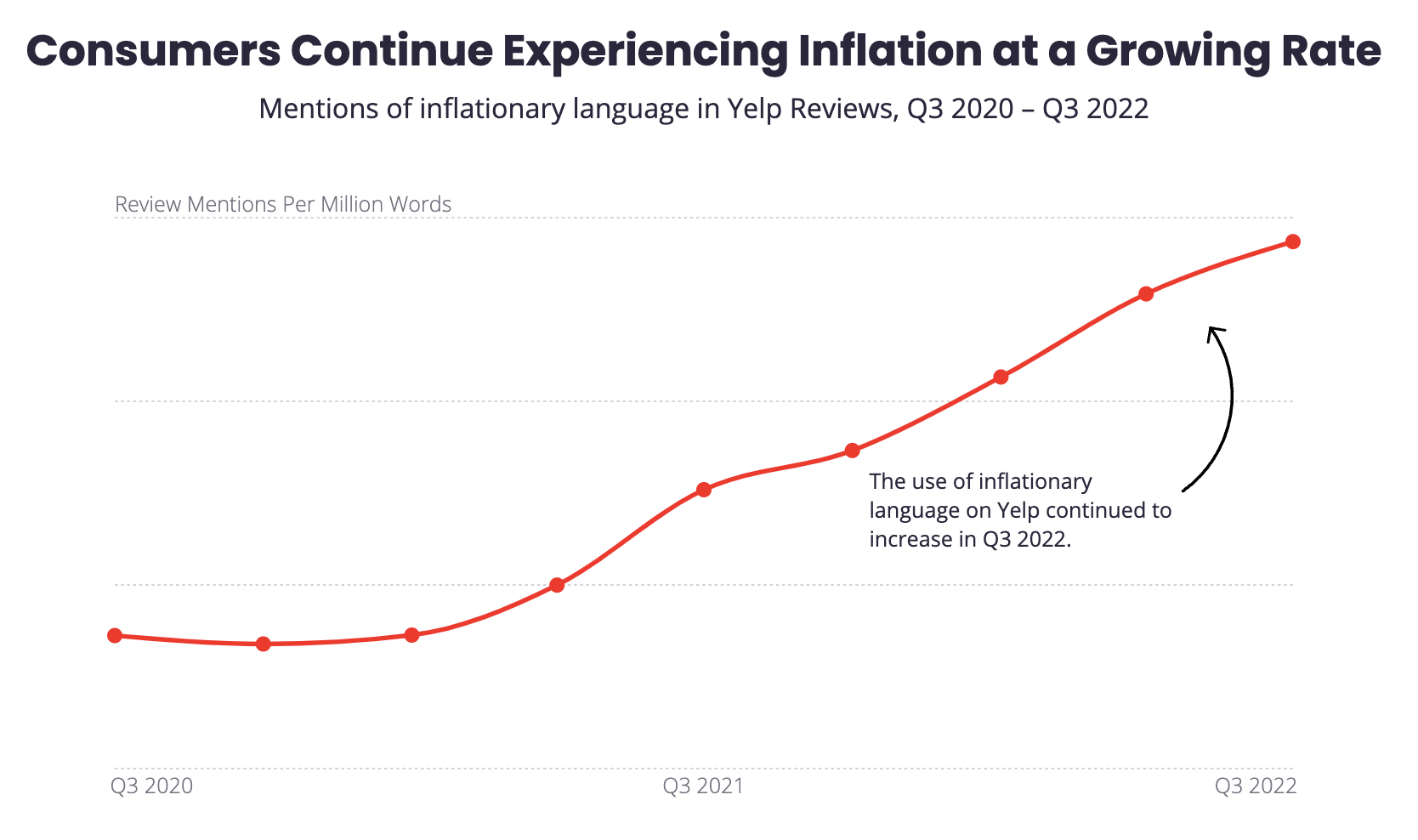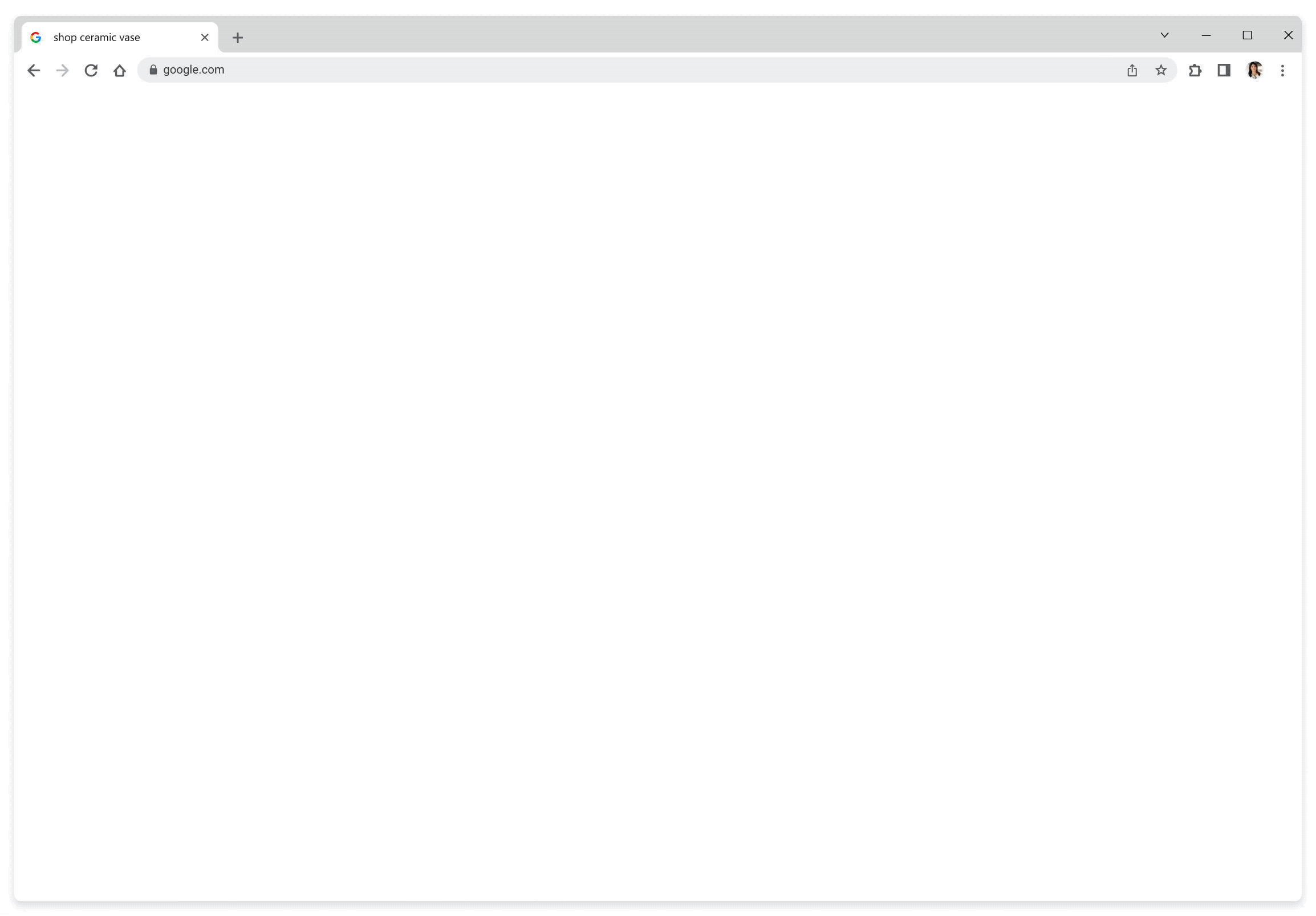Local Memo: Consumers Seek Budget Options as Inflation Continues
In this week’s update, learn about the impact of inflation on consumer search; local SEO maintenance tasks you shouldn’t neglect; updates on Google suspensions and review removals; new local features in search results; third-party links in healthcare profiles; and the prevalence of Google-owned features in product searches.
Consumers Seek Budget Options as Inflation Continues
Every state in the U.S. has seen a year-over-year increase in reviews that mention inflation, according to the latest Yelp Economic Average report. With the country experiencing some of the greatest rates of inflation in 40 years, the prices of consumer goods continue to rise, and consumers are expressing their frustration in reviews of restaurants, grocery stores, beauty salons and spas, pet stores, healthcare providers, and other business categories. Some regions of the country appear to be feeling the pain more acutely than others, with reviews in the Southwest showing the biggest growth spike in mentions of inflation quarter-over-quarter at 7%, and the Midwest seeing the biggest spike year over year at 27%. Overall, reviews mentioning what Yelp calls “inflationary experiences” are up 22% in Q3 2022 compared to the previous year, and 4% compared to the previous quarter. Some verticals saw much higher numbers, with certain restaurant subcategories seeing as much as 89% growth year over year, and spa services like tanning up by as much as 216%.
Behavior on Yelp shows that consumers are cost conscious. Searches for budget dining and groceries are up 11% from last quarter alone, and the increase in share of searches using the low cost “$” indicator is up 7%. Searches for less expensive dining options such as fast food and fast casual are up 10% from last quarter.
Courtesy Yelp
Don’t Neglect Local SEO Maintenance Tasks
Phil Rozek is back with another blog post full of good practical advice, this time focused on preventing what he calls “dry rot” in local SEO — problems that can begin to affect your performance when you neglect routine maintenance of your pages and profiles. Backlinks and internal links may become broken; your category may become overrun with Google Maps spam; unwanted Google updates may overwrite accurate information in your profiles; blog content (and any other timely content on your site) may become outdated. Rozek suggests paying attention to more common problems like those listed above, as well as a longer list of rarer issues such as failing to keep pace with Google category updates and getting attacked by competitors who may maliciously edit your listings, and less severe but still important issues such as having duplicate listings, neglecting new GBP features, or failing to create listings on new niche directories in your industry. The full post contains lots more examples of topics to pay attention to in order to ensure you’re maintaining your local SEO adequately.
Suspension Bug Fixed, Review Removals Continue
Joy Hawkins reported on Friday that the bug causing many Google Business Profiles to be suspended in response to minor updates, such as editing business hours, has been fixed. This is according to information from Google. For the past several weeks, business owners and managers have been plagued by a large wave of suspensions; presumably these will now start to be lifted in cases where the bug was to blame.
However, in a separate tweet Joy confirmed what many others have noted: Google appears to be removing reviews from business profiles again at an accelerated rate, a phenomenon that has been reported at various times this year starting in the spring. Jason Brown has observed that review takedowns are happening on a daily basis between 10am and noon Pacific time. Barry Schwartz has pointed out that the removals coincide with a wave of older reviews appearing in profiles that had previously been withheld from publication. Presumably, if none of this is bug-related, Google has tweaked or is testing the review moderation algorithm.
Google Rolls Out “Preview This Place,” Showcases Service Attributes, Categorizes Photos and Reviews
People are finding examples in the wild of Google showcasing local restaurants with the new “Preview this place” feature that was announced at the recent Search On event. The feature presents photos and review snippets in a video-style format that recalls Stories on Snapchat or Instagram.
As I’ve mentioned previously, Google is also testing a Local Finder display on desktop that has features more commonly seen in mobile search, such as the Services tab in business profiles. Others have spotted more examples in the wild.
Google is also automatically grouping the photos and reviews in some business profiles when they share a common category. The feature is similar to the popular keywords that appear at the top of review feeds. In the public business profile, users may see a review icon, keyword, and number in the bottom corner of a displayed photo. In the screenshot, reviews mentioning bathroom restoration and photos depicting bathroom restoration services are grouped under the keyword “bathroom.” Tapping the keyword takes you to the reviews mentioning that service, with reviews containing photos shown first. Though this feature seems to be appearing for the first time in categories like water damage restoration, local SEO commentator Tim Capper noted it has been available for some time in the restaurant category.
Courtesy Tricia Clements / Search Engine Roundtable
Google Showcasing Third-Party Appointment Links in Healthcare
Colin Neilsen has noted that Google is showcasing ZocDoc links in healthcare listings, directing users to book appointments through the third-party platform. This is similar to third-party integrations in other verticals such as restaurants, which have been around for several years now. Colin complained that in this case, healthcare providers would have to pay a fee to ZocDoc for any appointments booked on the platform. In response, Google’s Danny Sullivan provided a link to the support documentation which explains that business owners can request removal of third-party links, but must first work directly with the third party provider rather than with Google. David Mihm pointed out that the ZocDoc-Google integration has actually been around for a while now, though it has apparently appeared and disappeared over the years as well as changing formats.
Courtesy Colin Neilsen
Product Search Dominated by Google SERP Features
A study from seoClarity shows the great extent to which product searches are now dominated by Google-owned SERP features such as product carousels and local listings. The study looked at search results for 150,000 apparel-related keywords, and found that Google SERP features appeared in 95% of the top 10 results for those searches. Some 85% of those results included the Popular Products carousel, by far the most common feature, and 48% of these results showed a carousel in the first 3 results. When shown at the top of the page, the product carousel can take up a full screen on mobile devices and the equivalent of 5 organic listings on desktop. Surprisingly, 75% of mobile product results had 4 or more Popular Products carousels throughout the search results. The report points out that retailers need to shift focus from optimizing their websites towards optimizing product listings in Google Shopping — as well as related platforms like Google Business Profiles — in order to be discoverable within Google-dominated product results.
Google has also announced that product searches are getting more visual, with products, brands, articles, and videos in shopping results being showcased with images at the forefront. Google says its Shopping Graph now contains information on 35 billion products.
Courtesy Google
Damian Rollison
Subscribe to Local Memo!
Signup to receive Local memo updates and the latest on localized marketing, delivered weekly to your inbox.



